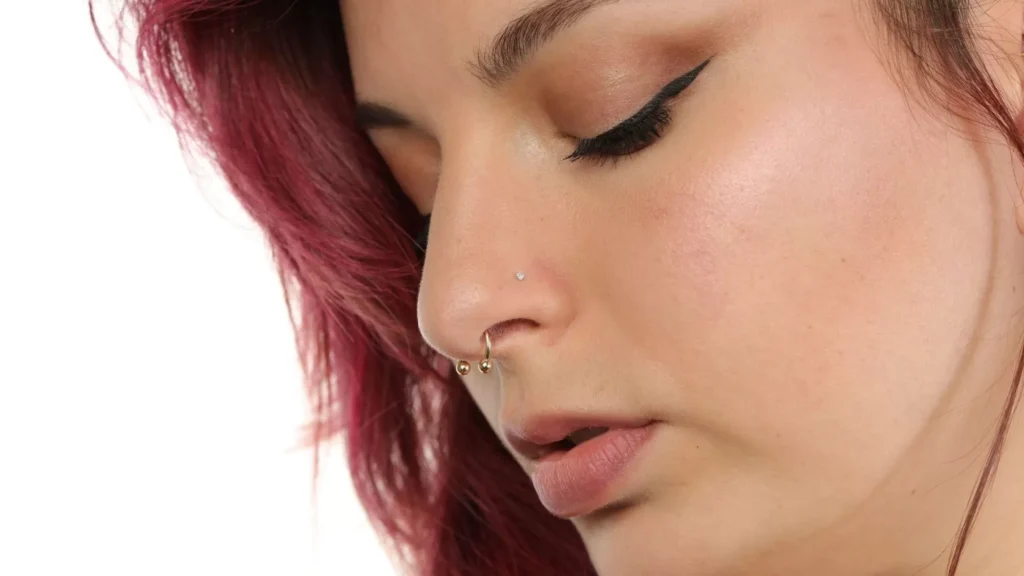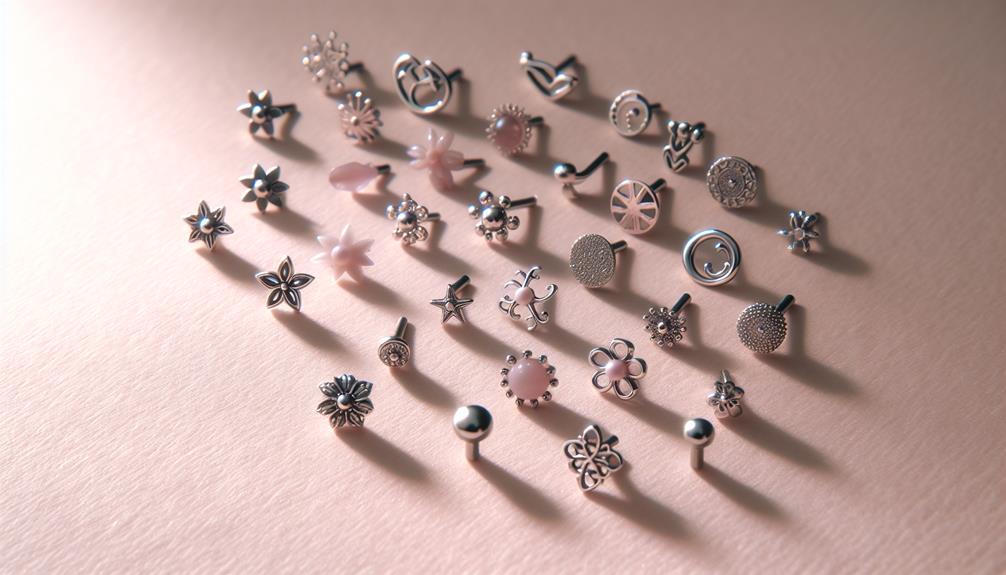The aesthetic appeal of body piercings can, at times, be overshadowed by the concern of darkened skin that may develop around the site. This discoloration, while typically benign, can be a source of cosmetic distress for individuals. Understanding the etiology of this pigmentation change is paramount in addressing the condition effectively. Factors such as jewelry material, friction, skin type, and aftercare practices contribute to the manifestation of this phenomenon. A systematic approach to skin care and treatment options can offer improvement and, in some cases, complete resolution of the hyperpigmentation. It behooves those affected to explore the available remedies and preventative measures, bearing in mind that the path to restoring the skin’s natural tone requires patience and potentially a tailored strategy to match one’s unique dermatological needs. The question remains: what are the most effective methods to alleviate this common yet often overlooked issue associated with body piercings?
Understanding Skin Discoloration
Skin discoloration around a piercing site is a common physiological reaction to the injury inflicted during the piercing process. Often perceived as an aesthetic concern, this discoloration can manifest as dark skin around the area, affecting both the appearance and texture of the skin. As a natural part of the healing process, the body responds to the piercing trauma, which may result in hyperpigmentation or even scarring. These changes are not necessarily indicative of improper care but are factors to consider for individuals who value their skin’s appearance post-piercing.
It is important to recognize that skin discoloration is not a one-size-fits-all issue; it can vary from subtle changes to noticeable dark spots. Allergic reactions to jewelry, particularly those made from materials that are not biocompatible, can exacerbate skin irritation and contribute to discoloration around the piercing. To mitigate these risks, selecting high-quality, implant-grade surgical stainless steel jewelry can prevent tarnishing and minimize potential allergic reactions.
Consistent and diligent aftercare is essential to maintain skin health and can help lighten dark spots that have developed. Remedies such as emu oil, saline soaks, and scar tapes are often suggested to reduce the trauma’s impact, although results can differ among individuals. Furthermore, protecting the skin from sun exposure is crucial, as UV rays can intensify hyperpigmentation.
For those seeking to manage or reverse skin discoloration, it is imperative to consult a professional. A dermatologist or piercing expert can provide tailored advice and treatment options, ensuring that the desire for skin integrity and appearance aligns with the freedom of personal expression through body art.
Proper Piercing Aftercare
While selecting the right jewelry and understanding skin reactions are fundamental, adhering to a strict aftercare regimen remains crucial for the health and appearance of your new piercing. Proper aftercare supports the initial healing process and prevents complications that might affect the skin’s pigmentation around the piercing site.
To maintain the freedom of self-expression that comes with body art, while ensuring the well-being of your piercing, consider these aftercare strategies:
- Piercing Aftercare Essentials
- Clean the area with a saline solution at least twice a day to keep the piercing clean and assist in the healing piercing process.
- Choose hypoallergenic jewelry to minimize the risk of allergic reactions and irritation, which can lead to darkening of the skin.
- Protecting the Area
- Avoid touching the piercing with dirty hands, which can introduce bacteria and disrupt the delicate balance required for proper aftercare.
- Make sure to keep the area dry, especially after showering or swimming, as moisture can harbor bacteria.
- Monitoring Healing
- Observe the piercing for any signs of infection such as redness, swelling, or unusual discharge. Promptly seeking professional advice can prevent complications.
- Be patient during the initial healing phase and resist the urge to change piercing jewelry too soon, as this can irritate the skin and affect healing.
Choosing the Right Jewelry
Selecting jewelry crafted from hypoallergenic materials such as surgical stainless steel or titanium is a critical step in ensuring the long-term health of your piercing. When choosing the right jewelry, it is imperative to consider not only the aesthetic appeal but also the compatibility with your body. Jewelry made of surgical steel or titanium minimizes the risk of adverse reactions, preserving the freedom of expression that comes with body piercing while safeguarding the skin around the piercing area.
In the pursuit of preventing discoloration of the skin and promoting favorable healing conditions, evaluating the design of the jewelry is as crucial as selecting the material. Smooth, rounded edges are particularly important for a new piercing, as they reduce the likelihood of irritation and friction, which can exacerbate skin care issues.
Quality should never be compromised when it comes to body adornments. Implant-grade materials are the gold standard for preventing tarnishing and ensuring that your piercing remains an emblem of personal style without the burden of discoloration or infection. This level of quality is crucial, especially in areas where the skin is prone to darkening.
Consulting a professional piercer is not an option but a necessity. A reputable specialist can provide tailored advice that aligns with your skin’s needs and the specifics of your piercing. They can guide you in selecting jewelry that not only looks great but also supports a healthy healing process.
Lastly, the ease of maintaining and cleaning the jewelry should align with your skin care and aftercare routine. This consideration will ensure that your piercing remains a source of pride, free from complications, and continues to reflect your unique sense of self.
Home Remedies for Lightening
In addressing the concern of darkened skin around piercings, several home remedies can be employed to aid in the lightening process. These natural approaches provide individuals with the autonomy to manage their skin’s appearance effectively and see significant results without resorting to harsh chemicals or expensive treatments.
- Natural Lightening Agents
- *Lemon Juice*: Known for its bleaching properties, lemon juice can be applied directly to the dark skin around a piercing to gradually lighten the area.
- *Aloe Vera Gel*: This soothing substance not only promotes healing but also helps in reducing hyperpigmentation.
- *Tea Tree Gel*: Tea tree is beneficial for maintaining skin health while working to lighten darkened areas.
- Vitamin E Supplementation
- Vitamin E is renowned for its skin-nourishing properties, which include improving blood circulation. Applying vitamin E gel may assist in the lightening process and is particularly beneficial when used on healing jewelry to prevent further irritation.
- Sun Protection Measures
- *Use Sunscreen*: Sun exposure can exacerbate darkening. Therefore, applying sunscreen with a high SPF is crucial to protect and prevent additional hyperpigmentation around the piercing.
- *Covering Up*: In addition to sunscreen, wearing protective clothing or accessories can shield the affected area from harmful UV rays.
To achieve optimum results, it is essential to Clean The Piercing regularly, ensuring that any home remedy is applied to a hygienic surface. Consistency and patience are key when using home remedies for lightening dark skin around a piercing. With dedication to these simple yet effective methods, individuals can reclaim their skin’s natural tone and celebrate their piercing without unwanted darkening.
Over-the-Counter Solutions
For individuals seeking a more potent solution to darkened skin around piercings, a variety of over-the-counter products provide targeted treatments that can effectively lighten the area. These solutions offer the freedom to manage and improve skin tone without the need for professional intervention.
Topical treatments containing ingredients such as hydroquinone, kojic acid, or licorice extract are readily available and have been shown to lighten dark skin by reducing melanin production. These agents specifically target hyperpigmentation, making them suitable for areas around the piercing that may have become darker due to inflammation or irritation during the healing process.
In addition to targeted lightening agents, incorporating products like vitamin C serums, retinol creams, or niacinamide into one’s skincare regimen can be beneficial. These substances are known for their brightening properties and can help diminish the appearance of dark spots, contributing to a more even skin tone around the pierced area.
Scar lightening creams or gels, often containing onion extract or silicone, can also help improve the look of darkened skin. These over-the-counter solutions are formulated to address the unique challenges of scarred or discolored skin, which can sometimes result from a piercing, particularly in areas like the belly button.
Gentle exfoliation with products featuring alpha hydroxy acids (AHAs) or beta hydroxy acids (BHAs) can aid in sloughing off dead skin cells, promoting a fresher and more uniform skin surface. Meanwhile, skin brightening masks or patches infused with arbutin or vitamin E provide a concentrated approach to treating discoloration around the piercing.
When to See a Dermatologist
When darkened skin around a piercing persists or worsens despite at-home care, it is prudent to seek the expertise of a dermatologist. It’s essential to understand that while the journey to rid of dark spots around the piercing may take time, certain conditions should prompt a prompt visit to a skin specialist. The area around your piercing deserves the best care, and sometimes the freedom to enjoy your body art without concerns about pigmentation changes necessitates professional intervention.
Consider seeing a dermatologist if you encounter:
- Persistent Hyperpigmentation:
- Dark Skin Around Piercing: If the discoloration remains despite diligent at-home treatment.
- Worsen Hyperpigmentation: When the dark spot around the piercing continues to darken over time.
- Long Does It Take: Recognizing that while it takes time to lighten skin, lack of any improvement may indicate the need for professional help.
- Unusual Symptoms:
- Cause Skin Irritation: If there’s pain, itching, or the pierced area’s appearance changes, which could suggest an underlying issue.
- Area Around the Piercing: Any abnormalities in texture or color that could signify infection or allergic reactions.
- Considering Advanced Treatments:
- Rid Of Dark Spots: Discussing options like laser therapy, chemical peels, or dermabrasion for stubborn areas.
- When to See a Dermatologist: Professional treatments should be evaluated for their risks and benefits by a qualified dermatologist.





